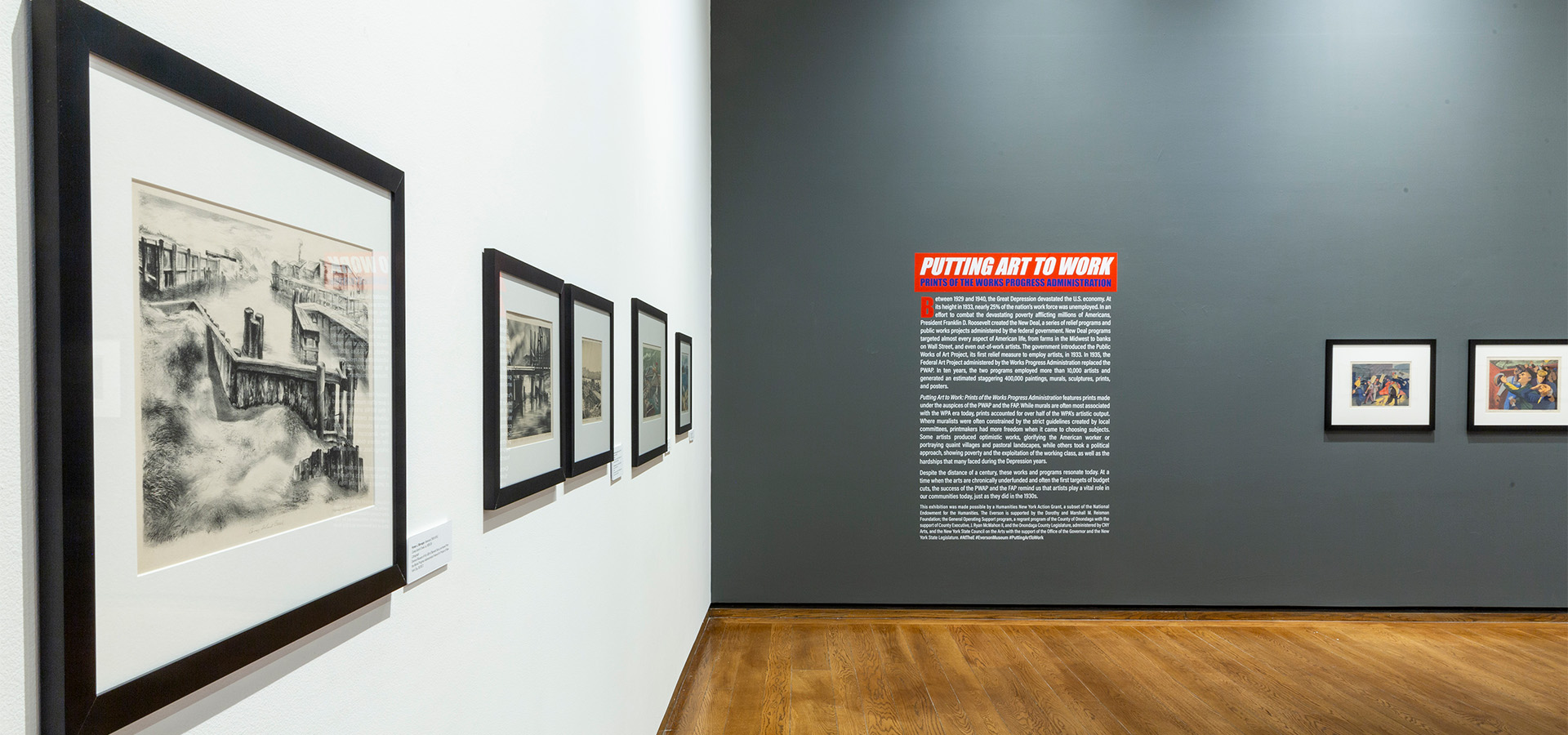Lecture Postponed — New Date Coming Soon!
Please check back for updates. We appreciate your understanding!
The New Deal art projects, created to provide financial relief to artists during the Depression, can be understood as part of the “put people back to work” ethos of the 1930s. Eligible artists were paid by the federal government to utilize their expertise in various ways. This represents an unprecedented moment in American cultural history. There was no real tradition in the United States of government support for artists, aside from a handful of public art projects which appeared sporadically. But the idea that artists—like carpenters and plumbers—were “workers” that had a right to make a living, because they made valuable contributions to American society, was novel.
In her lecture, Mary Ann Calo will expand this general understanding through a discussion of the differences between the two different art projects from which the prints in the Everson exhibition Putting Art to Work: Prints from the Works Progress Administration were drawn: the Public Works of Art Project and the Works Progress Administration-Federal Art Project. She will address the position of different media within these projects, including easel painting, murals, and printmaking, discuss the educational initiatives of the WPA-FAP, specifically the Community Art Center Program, and will conclude by examining the impact of these programs on African American communities and artists.
Putting Art to Work: Prints of the Works Progress Administration, Photo: Jamie Young


